Theory I: Triads and Seventh Chords
Part of what makes music interesting is the interaction of lines of music coming together to create interesting sounds. In the common practice period, these sounds resulted in what we call chords. A chord is simply 2 or more notes sounding at the same time. There are many different types of simultaneities that occur in music, but the most common is the chord we call a triad. As the name implies, this is a chord that has 3 notes, and these notes are arranged in specific ways. Common practice period music is based on the idea of chords built on the interval of the third. It is often referred to as tertian, but that name takes on a different meaning in the 20th century, so we tend to use the word triadic instead. There are 4 types of triads, 3 of which are very commonly used during the common practice period. They are called Major, Minor, Diminished, and Augmented. The augmented triad is not widely used before the end of the 19th century.
All triads consist of a root, third and fifth. When the chord is stacked in it's smallest order, then the root is on the bottom, and the triad is called by that root. The chord below is a Major Triad. It has a major third and a perfect fifth. Notes are always counted from the lowest note, in this case the root. The major triad is called so because the first interval is a major third.

This triad has a minor third on the bottom and is called a minor triad. It consists of a minor third and a perfect fifth.
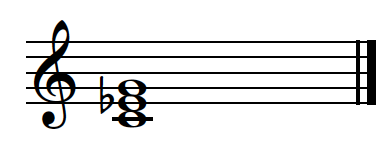
This triad has a minor third and a diminished fifth. It is called a diminished triad because of the fifth of the chord being lowered to a diminished fifth.
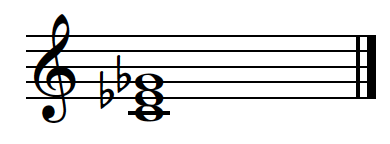
This triad has a major third and an augmented fifth, and is called an augmented triad because of the augmented fifth.
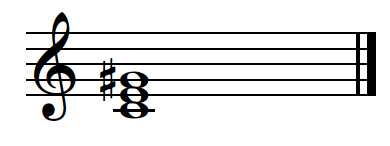
The previous chords are all in root position, which means they all have the root of the chord as the lowest note. The lowest note is also called the bass, no matter what chord member is lowest. Chords can be inverted, or flipped, so that another chord memeber is the lowest. There are three inversions of triads: root position, first inversion, second inversion.
Root position triad. The root is the lowest note. All the intervals are thirds when stacked from the root.
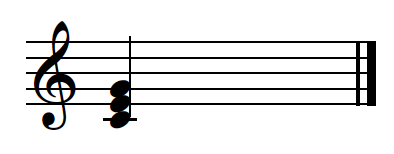
First inversion: The third of the chord is the lowest note.
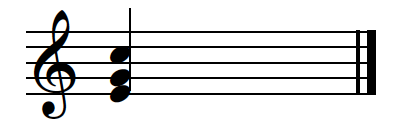
Second inversion: The fifth is in the bass.
